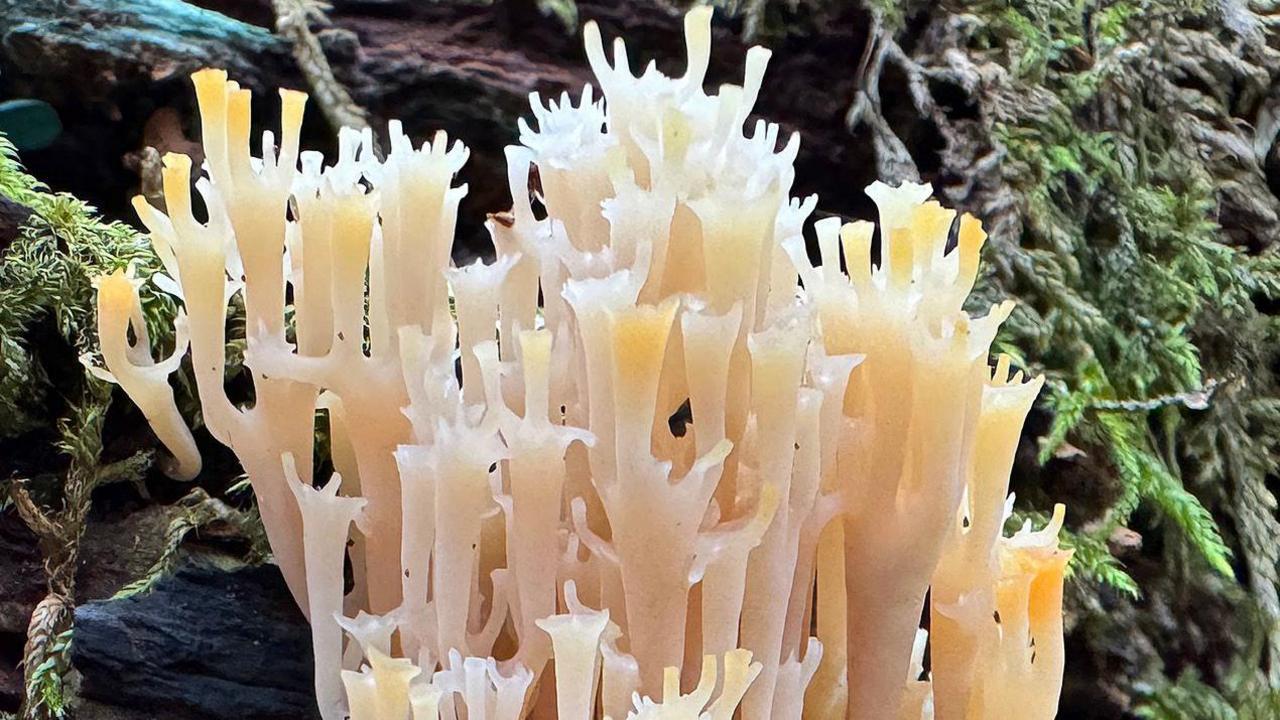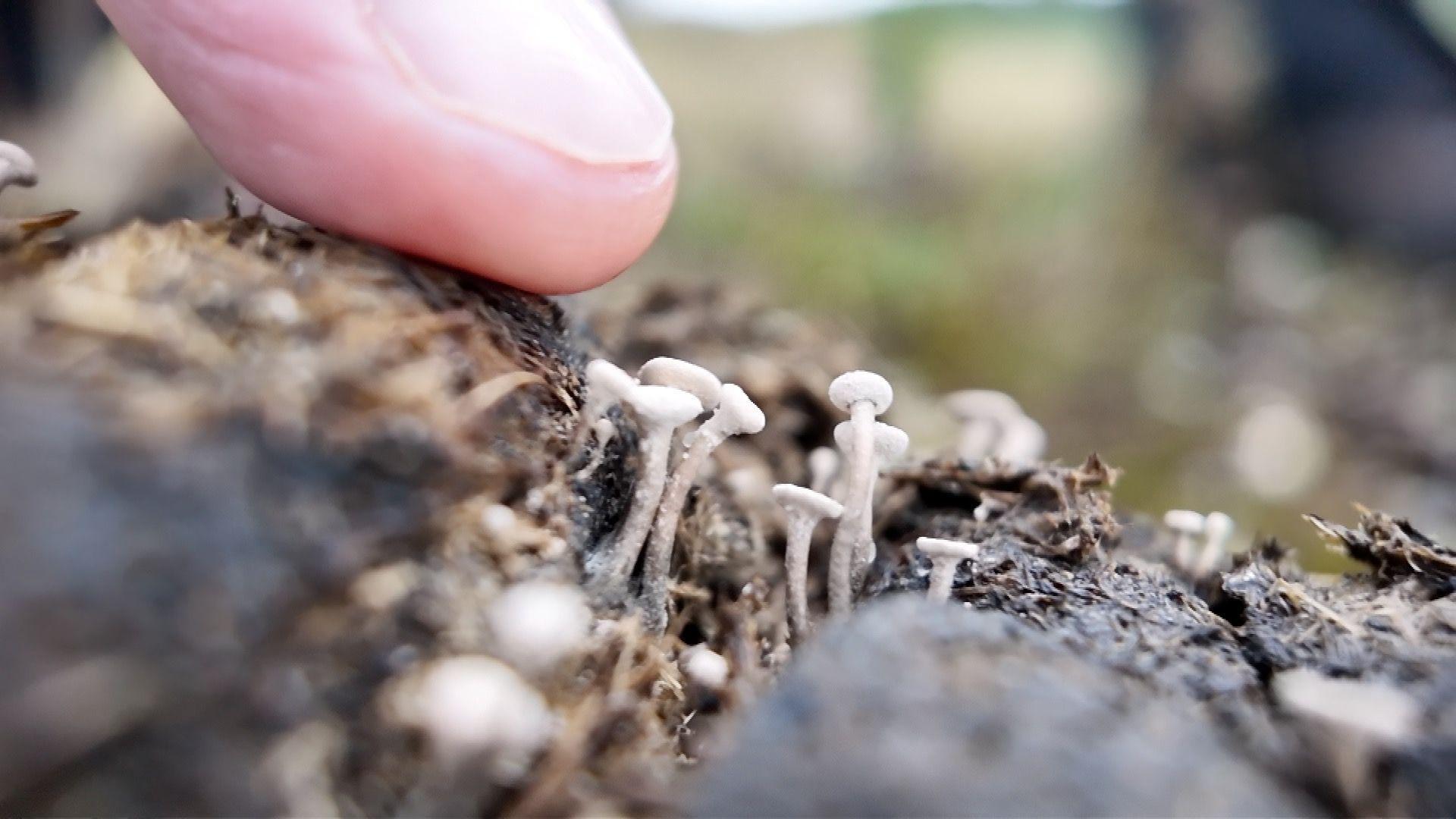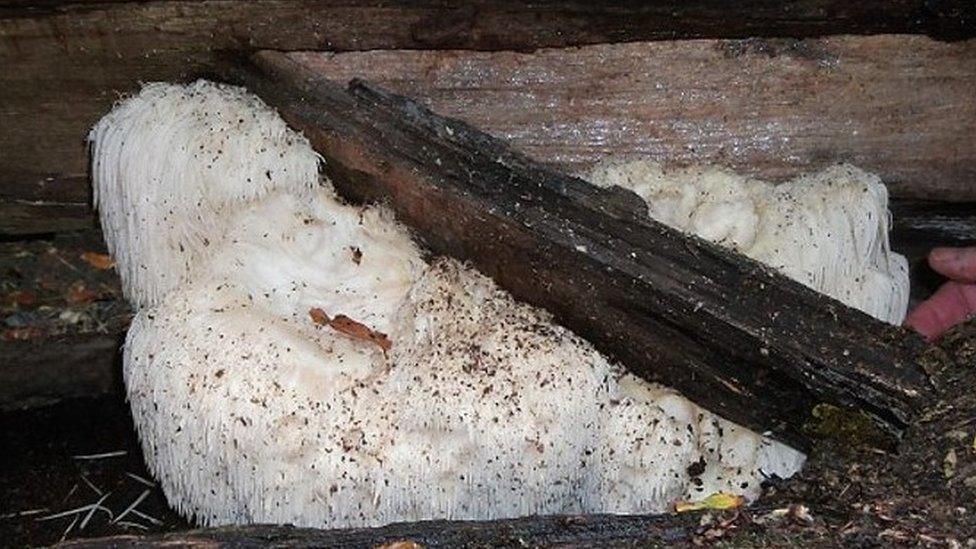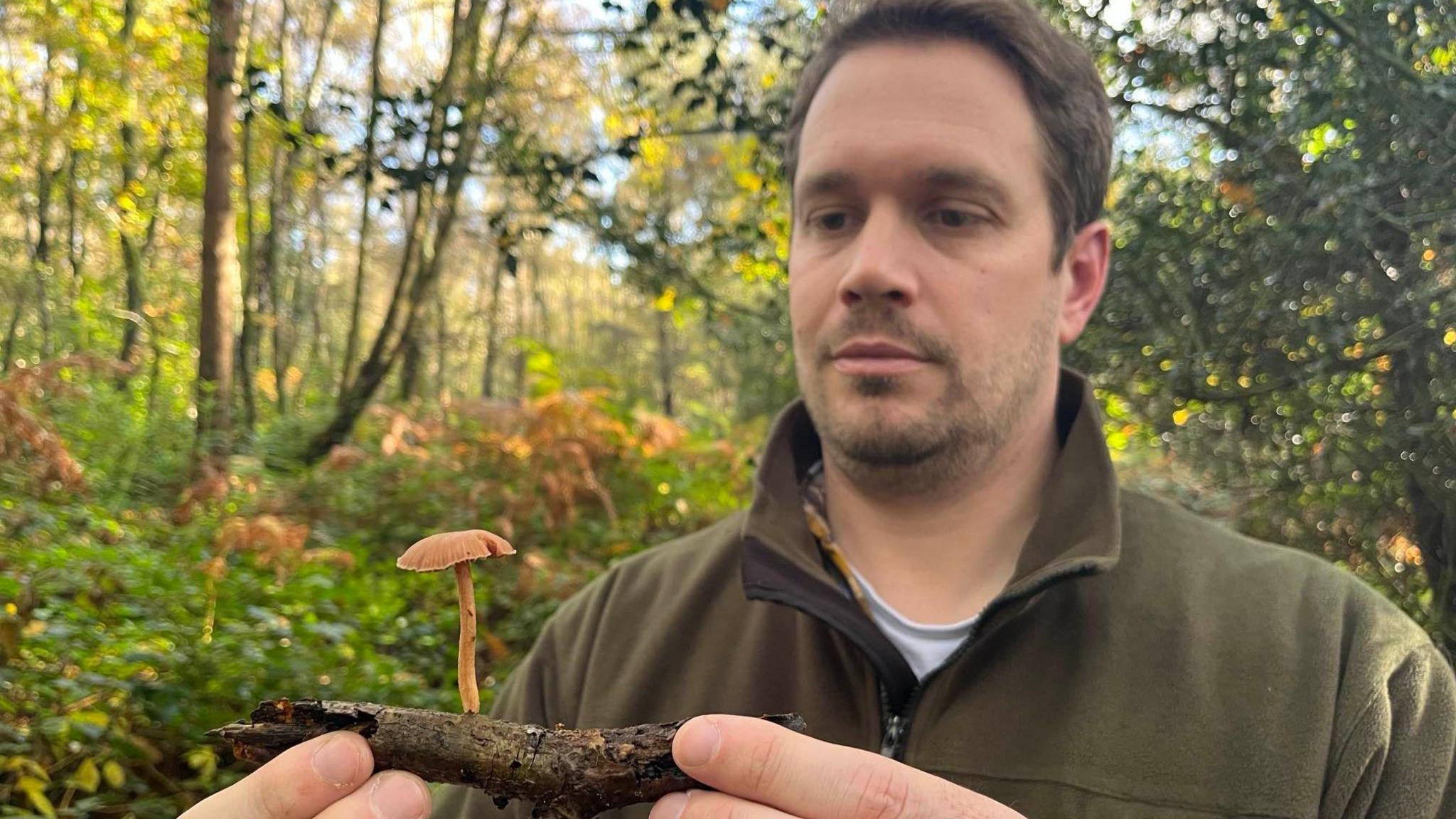Rare fungus spotted in New Forest for first time

The fungus with white branches has been found growing in at least six sites in the New Forest
- Published
A fungi, which looks like a candelabra, has been found in a national park for the first time.
The New Forest National Park Authority (NFNPA) said the nationally rare fungus, Candelabra Coral, known for its striking crown-tipped creamy white branches, had been spotted growing in recent weeks at six sites in the forest.
Professor Russell Wynn, director of Wild New Forest, who made one of the finds said the "sudden arrival of the Candelabra Coral in the New Forest this autumn is remarkable."
He said said the reason for its appearance was not clear but "given its distinctive and identifiable species, it is unlikely that it would have been overlooked in the past."

It is not known why the fungus has suddenly appeared in the New Forest this autumn
After not being seen for decades the fungus was rediscovered in Suffolk in 2012 and has since been recorded in at least 10 English counties during the past five years.
The fungus, can grow up to 10cm high and thrives on decaying deadwood in moist woodland environments. One of the areas where it was found is within part of the Species Survival Fund (SSF) project.
Led by the park authority, SSF is a £1.3m project with five partner organisations.
It is working to help halt species decline and restore habitats in the New Forest covering an area the size of 350 football pitches.
So far, the scheme has planted wildflower meadows, crated ponds, and restored heathlands and woodlands to help wildlife flourish.
As part of the project, Wild New Forest has carried out wildlife surveys to understand the area's biodiversity and identify priority species before restoration work was carried out.
Get in touch
Do you have a story BBC Hampshire & Isle of Wight should cover?
Related topics
- Published16 September

- Published23 November 2018

- Published24 October 2024
